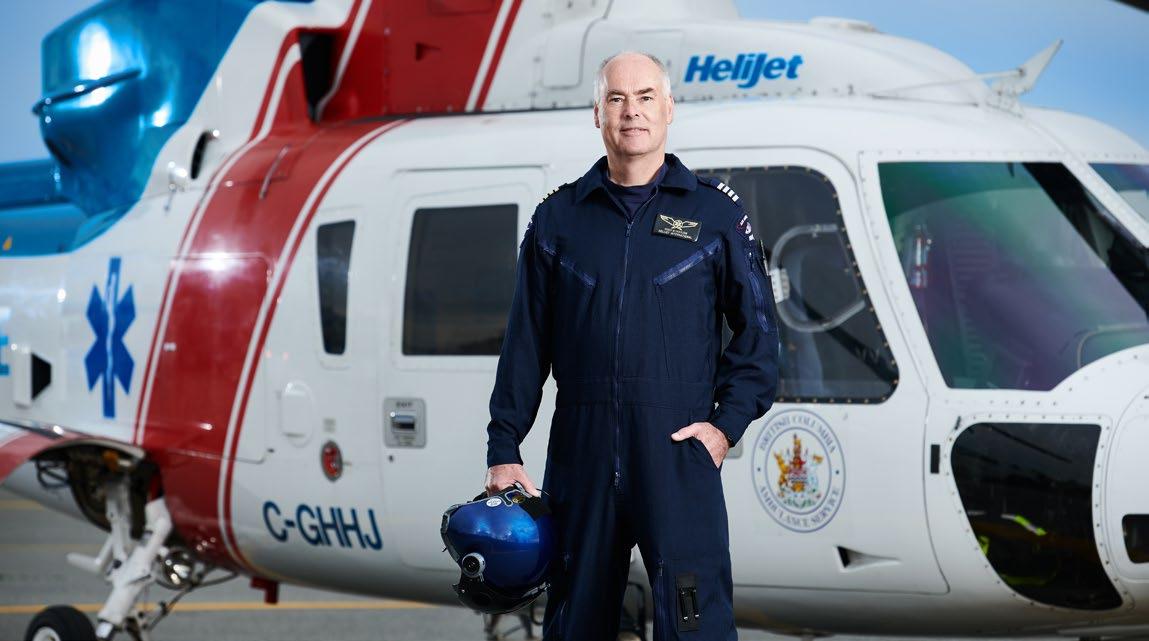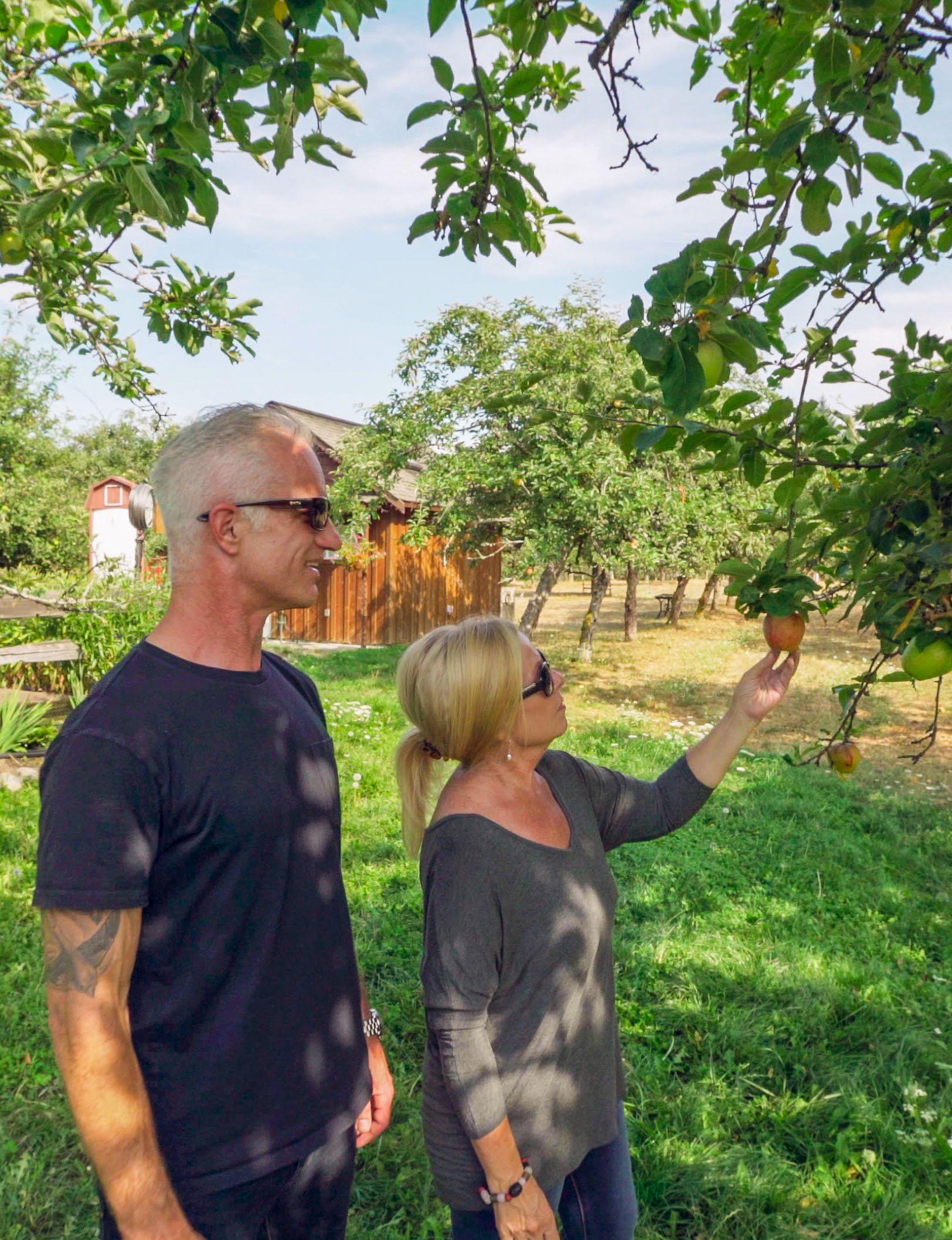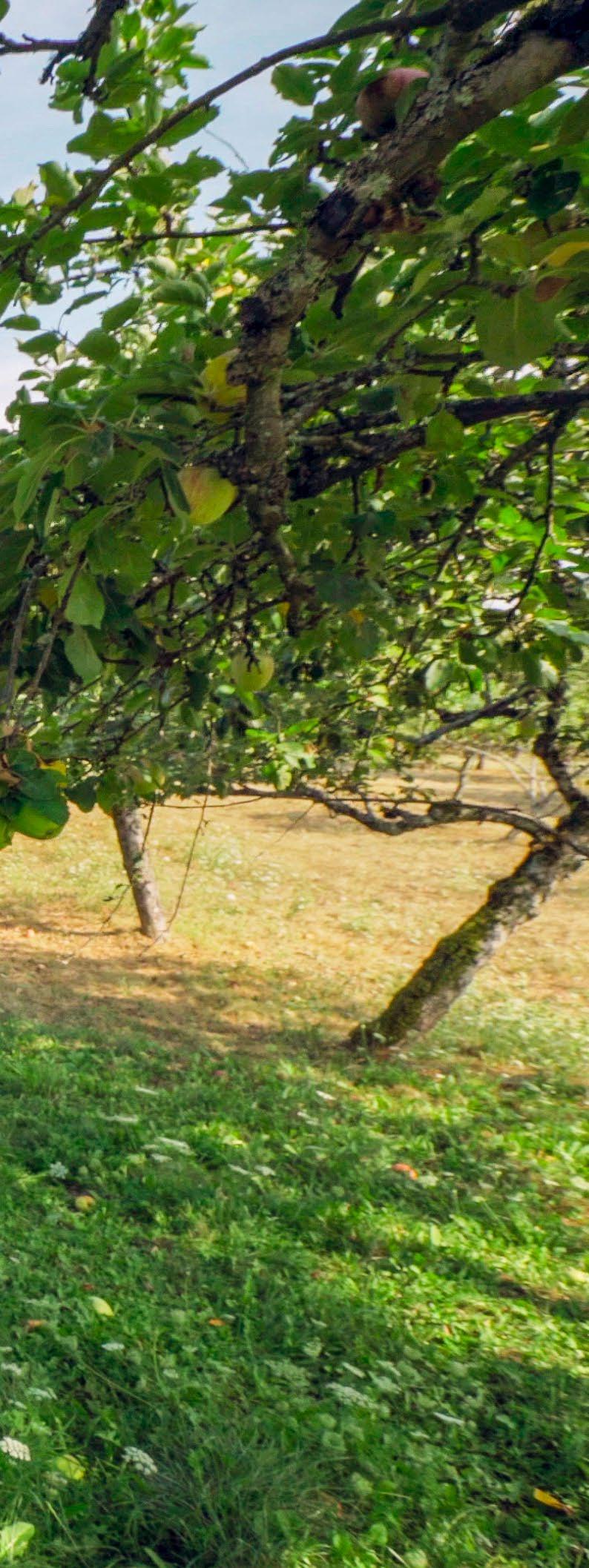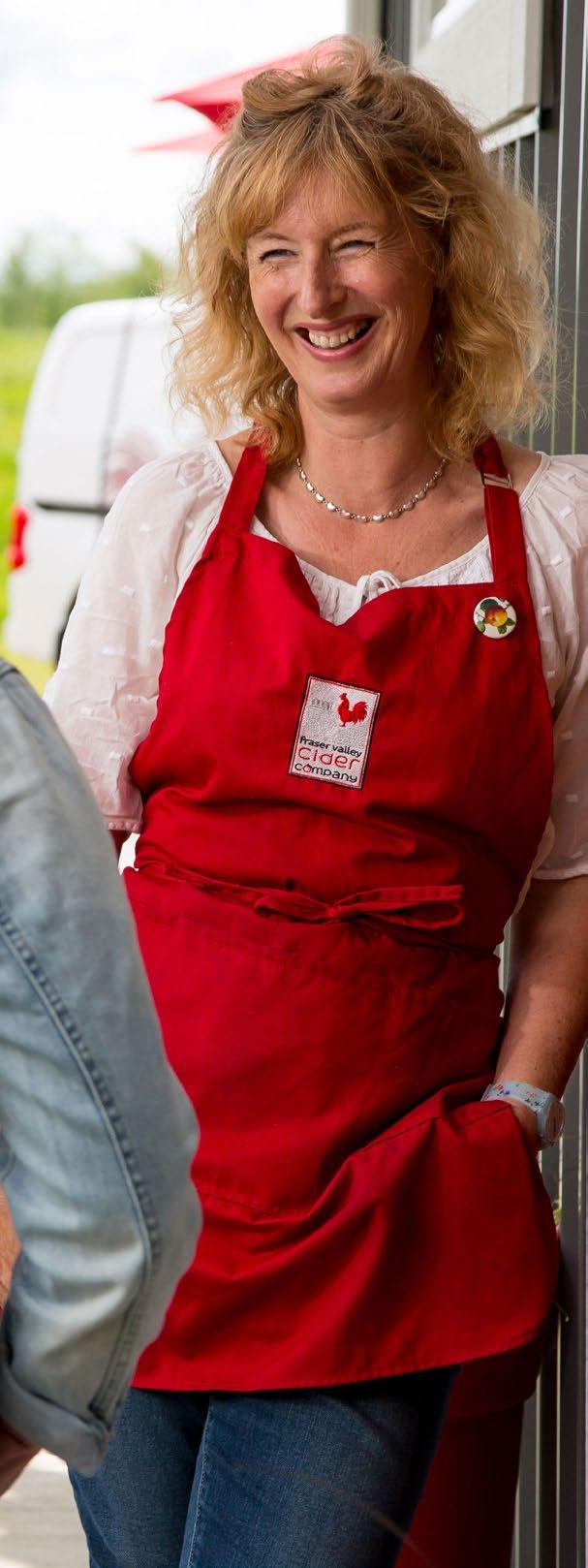




As Canada’s engaged university, we mobilize knowledge to drive innovation that benefits society. Real-world challenges become opportunities for real-world impact.
4D LABS links researchers to industry to drive innovation and job creation. Our Invention to Innovation program is creating business-savvy scientist-entrepreneurs who know how to ensure their great ideas can find their way to market. RADIUS helps innovators find sustainable ways to tackle social problems.
SFU Innovates. Yes, we do.
In-Flight Review Magazine
Managing Editor: Stephanie Cunningham
Graphic Design: Brent Foote
Contributors
Stephanie Cunningham, Sue Kernaghan, Bruce Williams, Bob Loblaw
For information on display advertising opportunities, email: info@archipelagomedia.com
Published by
Archipelago Media
1248 Woodway Road Victoria BC V9A 6Y6
Tel 250.380.3961 archipelagomedia.com
Complimentary Copy ISSN 1916-5080
In-Flight Review FALL 2020
Vol. 13 No. 3
In-Flight Review (IFR) is a quarterly magazine published by Archipelago Media Ltd. for Helijet International Inc. All published material is the copyright of Archipelago Media Ltd. No part of this publication, in whole or in part, may be reproduced without the written consent of the publisher. The written and photographic material published in In-Flight Review does not necessarily reflect the views of the air carrier or the publisher. Information and images produced in the magazine are believed to be accurate and truthful, but the publisher assumes no responsibility for errors.
Advertising in In-Flight Review magazine does not indicate an endorsement by Helijet International Inc. or Archipelago Media Ltd.

SIKORSKY S-76A

S-76C+ (BC AIR AMBULANCE SERVICE)

SIKORSKY S-76C++



Junior Kindergarten to Grade 12

Academic Excellence
Innovative Thinking
Global Citizenship
admissions@aspengroveschool.ca | 250-390-2201

Fine clothing, accessories, custom tailoring and superior service have been in our family since 1917.
We welcome you to our store in Victoria to discover the colors, texture and quality of our unique merchandise. #110-735 Yates street st. andrews square 250.384.8087 kstraith@shaw.ca www.kanestraithclothing.com
BY BRUCE WILLIAMS, CEO OF THE GREATER VICTORIA CHAMBER OF COMMERCE
SINCE BEING NAMED incoming CEO of the Greater Victoria Chamber of Commerce in February, I’ve heard more than once that I must be crazy to take on the leadership of a business organization during a pandemic that has effectively crashed the world’s economy. But I’m always up for a challenge, and it’s a privilege to lead The Chamber at this time. Where other might see obstacles, I look for opportunities.
This organization has been around since 1863, and has overcome every challenge it has faced over the decades. Now, more than ever, my role is to share the story of The Chamber and make sure its influence helps businesses bounce forward and develop even more resilience in the months and years ahead.
Fine Clothing, Sportswear & Accessories
Fine Clothing, Sportswear & Accessories
Since 1919
Phone: (250) 384-8087 Facsimile: (250) 595-6674 eMail: kstraith@shaw.ca
St. Andrews Square, 110-735 Yates Street, Victoria, British Columbia V8W 1L6
I first moved to Greater Victoria in the early 2000s to join a new television station covering Vancouver Island. Throughout my broadcasting career, subsequent consulting work and time spent on various boards and committees, I have been humbled and honoured to have built relationships with the region’s First Nations. My work has also allowed me to develop close connections with business leaders and decision makers at all levels of government.
Those relationships are now playing a key role in our efforts to advocate for programs and policies needed to get the region’s economy back on track. In

particular, The Chamber is working hard to help the tourism industry, which requires significant support to protect tens of thousands of jobs and the infrastructure that makes tourism an integral part of B.C.’s economy.
Other economic sectors are already showing signs of bouncing back. The real estate and construction industries continue to drive growth, and we’ve seen wonderful innovations from many businesses that have grown their online presence. For example, many restaurants and retailers pivoted to delivery and pickup orders. They’ve also found ways to allow for physical distancing so customers could return to their stores. This makes it possible for people to shop local and help restart our region’s economy.
We have a long climb ahead, but we are moving forward. I believe that by working together we can get back to a thriving economy and ensure businesses are able to get back on their feet.
Bruce Williams’s broadcast career included stints as a business executive with Bell Media and a producer, onair host and anchor with CTV. After moving on from media, Williams and his partner Amanda Wilson formed the consulting business Spark Strategic Group, and, in 2019, he took on the role of Interim CEO with the South Island Prosperity Partnership (SIPP).




generally look alike in uniform; in temperament they are anything but. Some choose to pursue careers in fixed-wing aviation, while others opt for rotary-wing. Many aspire to live in a city and become “white-collar” airline pilots, whereas others prefer “blue-collar” utility flying in Canada’s North. Then there are those who prefer set schedules with predictable routines, compared to others who welcome spontaneity, variety and challenge. Helijet’s Geoffrey Burkholder has sampled all the above over the past 30 years, ultimately finding his personal niche flying Helijet’s Sikorsky S76C+ on air ambulance operations for B.C. Emergency Health Services (BCEHS).
“Flying scheduled service has its benefits, but I prefer the unique demands of air ambulance,” says Burkholder. “Every day is new: we might get called out in the morning to pick up a patient on the West
Coast Trail, or we may get sent to a scene call on the Coquihalla Highway at night.” He adds, “We often get dispatched with limited information and have to quickly develop a flight plan that takes into account weather, freezing levels, fuel, scene location and destination hospital, among other things. It’s a fluid decision-making environment, and I enjoy that.”
Burkholder decided on a career in aviation at an early age. At 16 he began fixed-wing training, before switching to rotary-wing because he considered helicopters more interesting. He obtained his Commercial Licence at Langley International Heliflight in 1988, but flying jobs were sparse at the time so he spent the next two years searching for work before eventually getting hired by Vancouver Helicopters. His first assignment was flying a Robinson R22 on traffic watch, before upgrading to the Bell 206L LongRanger and Eurocopter AS355 Twinstar, operating sightseeing tours, pipeline patrols, and firefighting contracts.
After several summers working lengthy firefighting contracts in the Northwest Territories, Burkholder decided he wanted some semblance of a home life in Vancouver with his wife, Sheri. To that end, he applied to Helijet and was hired in September 1995 as a First Officer on the Sikorsky S76A.
Burkholder spent his first few years at the company operating scheduled service routes before upgrading to Captain. When Helijet won its first air ambulance contract in 1998, Burkholder was one of the first pilots to step forward.
“Some guys prefer the nature of scheduled operations,” says Burkholder. “The hours are predictable, you always know where you’re going, and generally you know what to expect. Air ambulance is different — it’s 24/7 and you never know where you might get sent.”
Operating air ambulance calls at all hours in all kinds of weather doesn’t deter Burkholder. The payoff, he says, comes from helping people: “We’re able to get paramedics to a scene fast and deliver the patient to a higher level of care, which can make all the difference.”
With 20-plus years in air ambulance operations, Burkholder is well suited to the role of Lead Ambulance Pilot. This position has him overseeing initial training for air ambulance pilots and monitoring day-to-day flight operations, while also acting as Helijet’s liaison with BCEHS paramedics, dispatchers and provincial managers.
“I work for Helijet, but my customer is BCEHS,” notes Burkholder. “I have so much respect for the air ambulance paramedics we work with. They are highly trained professionals working at the top of their game, and it’s amazing to watch them perform their job.” He adds, “We work together as a team and the relationship is almost seamless.” He explains that Helijet’s pilots learn to know and provide what paramedics need, often without asking. In turn, paramedics are careful to shield aircrew from patient trauma so it doesn’t unduly influence decision-making regarding a flight.
Operating at a high level with other professionals is its own reward, but so too is the satisfaction of working with friends and colleagues each day. “The people here are great, and I enjoy coming to work each day,” says Burkholder. What’s more, he adds, “when we get sent out on a call we know we are going to help someone who is likely having the worst day of their life.”


Robert J. Taylor, Executive Vice President



By Sue Kernaghan
British Columbians care about their drinks. With a bevy of craft breweries, farm gate wineries, artisanal distilleries and even meaderies located throughout the province, it was only a matter of time before we were sipping cider.
A dozen craft cideries have opened around the Salish Sea in recent years, all embracing a branch-to-bottle ethos, traditional fermentation methods and a respect for terroir. In addition, these 21st century cider makers have helped bring back hundreds of long-forgotten apple varieties, from the Blushing Golden to the William Crump.
Local tasting rooms welcome visitors, but if you can’t make it to the orchard, all products mentioned here are carried at private liquor stores around B.C.

This Cowichan Valley orchard is home to Canada’s oldest estate cidery. Since first opening in 1990, the property has grown to include a cider house, an eatery, Canada’s first craft distillery and even yurts for in-orchard glamping.
Owners Janet Docherty and Rick Pipes stay true to their roots, though, with a focus on estate-grown, additive-free traditional ciders. Top sellers include Cyser, a honey-infused elixir once thought to have magical powers, and a robust, oak-aged Scrumpy. Fun fact: Scrumpy was traditionally made from stolen, or scrumped, apples; this fruit is legit.
Jason Child, Docherty’s son and now general manager, has been part of the business since his teens. “When we started, we had to explain what cider was,” he says, “and now it’s taking that spot as an alternative beverage. People want things that are natural and craft cider is exactly that: just apples and yeast.”
The Cowichan Valley, with the highest average temperature in Canada, is ideal for cider apples, explains Child. The long growing season enables the fruit to develop more starch and tannin, and it’s those tannins that give cider its signature bite.
Sixth generation farmer Kristen Needham came to cider making the long way around. The owner of Sea Cider Farm and Ciderhouse in Saanich, Needham worked with farmers in rural Ethiopia before launching one of B.C.’s first craft cideries in 2007.

Today, Needham grows more than 60 kinds of organic apples, mostly the low-acid, high-tannin English bittersweets and bittersharps prized by cider makers. More than 20 traditional fermented English ciders include the Wild English, fermented with naturally occurring wild yeasts; Cherry Lane, finished with a dosage of juice from native B.C. cherries; and Raspberry Anne, an assertive fortified dessert cider inspired by Anne of Green Gables. Rumrunner, a nod to prohibition-era trade in the area, is aged in Newfoundland screech barrels.
A big supporter of local agriculture, profits from the Sea Cider Canadian Invasion series, for example, go to help combat invasive species.
A rustic tasting room, complete with sweeping views of Haro Strait, is the ideal spot to enjoy tasting flights and locally made cheese and charcuterie snacks. Sea Cider is also available at liquor stores throughout Western Canada and the US.

For Peri Lavender and Brian Webster it was love at first bite. As the couple left the Salt Spring Island Fall Fair one September about a decade ago, a farmer handed them each an apple.
“I bit in and it was like a whole new world opened up. How could we not grow apples?” recalls Webster. That first bite led to an orchard of 3,500 apple trees, producing more than 400 types of heritage and cider apples. Years later, Ciderworks was launched in 2017 with a line of certified organic, estate-grown ciders.
In the process, Lavender and Webster helped bring back a part of local history. A century ago, Salt Spring Island was Western Canada’s biggest apple producer, shipping hundreds of varieties to consumers as far east as Winnipeg. By chatting with local farmers, Lavender and Webster were able to find and revive many of those apples, including the long-forgotten Winter Banana, Bloody Ploughman, Foxwhelp, MarriageMaker and scores more.
“Every year I’m contacted by people from all over North America who are also collecting apple varieties — we call them apple hunters — and we trade wood for grafting,” says Webster. “We’re running out of room, but it’s hard to stop collecting.”
Most of Ciderworks’ output is sold through the tasting room, a scenic spot with lofty views over the orchard and the Three Sisters islands beyond.
A few miles north, at Salt Spring Wild Cider, Gerda Lattey and Mike Lachelt are taking a different approach to the island’s wealth of apples.
A stone sculptor and philosophy PhD candidate respectively, the pair make craft apple and pear cider with fruit foraged from Salt Spring’s heritage orchards and wild trees. Using traditional fermentation processes and, in some cases, naturally occurring wild yeasts, they make about a dozen ciders, including such offbeat infusions as Bitter Orange Rosemary and Hopped Apricot. They’ve been experimenting with other local wild fruit too, so watch for Wild Berry cider, featuring salal berries, currants and blackberries, and a new cider made with Salt Spring’s own Italian prune plums.
The cider house, in a revamped horse barn next to a McIntosh red 1935 farmhouse, oozes rustic charm. Sipping cider flights from mismatched glasses overlooking the newly planted orchard has become something of an island ritual.
Rachel Bolongaro, the owner of Langley’s Fraser Valley Cider Company, has been fermenting apples since her student days in the U.K. A career in chemical engineering, a move to Canada, and an intensive cidermaking course later, it was time to go pro.
Between 2014 and 2016, Bolongaro and her husband, Sean, bought a Fraser Valley acreage, planted an orchard, constructed a cider house, and even, being engineers, built a lot of their own equipment.
Since there was no history of apple growing in the area, the couple experimented with as many apple varieties as possible. The winners? Porter’s Perfection, Chisel Jersey and Brown Snout. “They sound like they should be houses at Hogwarts, but they do make good cider,” quips Bolongaro.
Fraser’s Valley’s first estate cider, Roosters Revenge, was launched in 2019. Other top sellers include the Elderflower Cider and Honey cider made with nectar from on-site hives. Sales have been booming nicely, with some seasonals, like Rhubarb cider, selling out in days.
The country setting is a big part of the appeal, notes Bolongaro. “There’s a huge move to eating and drinking local and, after the craft beer wave, people were looking for something new. For a long time cider was not given the attention it deserves, but that’s all changed now.”



By Stephanie Cunningham
As the old saying goes, the show must go on, and the constraints of a worldwide pandemic have pushed many film festivals to re-imagine new virtual delivery formats for their programming this year.
Luckily for film buffs, some festival flicks that may have been out of reach in years prior can now be streamed online at home. And although nothing can quite compare to the big sound and shared experience of viewing a fabulous film in the cinema, these festivals highlight some of the very best of international and homegrown Canadian filmmaking talent.
SEPTEMBER 10-19, 2020
TIFF.NET
TIFF has long been known as the place to catch a glimpse of Hollywood royalty on its annual red carpet. But as the pandemic took hold in March, organizers of North America’s largest festival recognized the need to quickly pivot into something new that would still give audiences and filmmakers a quality event with a range of viewing experiences.
This year, TIFF promises a hybrid experience, with five days of limited in-person showings in Toronto, plus a 10-day online digital showcase for Canadians viewing from home. Expect a tighter lineup of both feature film and short film screenings this year along with virtual red carpets, industry talks, film cast reunions and Q&As with filmmakers.
Missed the festival? Check out the digital TIFF Bell Lightbox (digital.tiff.net), an online platform where you can rent and watch old and new titles on demand from the TIFF catalogue plus gain access to plenty of bonus content.
SEPTEMBER 24 – OCTOBER 7, 2020
VIFF.ORG
Organizers of the 39th edition of the Vancouver International Film Festival describe this year’s offering as an “online primary” festival using VIFF Connect, a new online streaming platform, available to viewers throughout British Columbia.
“Rather than thinking about the restrictions imposed on us, we instead considered the opportunities that had been presented,” said Curtis Woloschuk, VIFF’s associate director of programming. The result for 2020 is a robust program of up to 100 feature films, an extensive selection of short films and plenty of interactive conversations with experienced industry professionals and rising new talents alike.
VIFF Connect will also allow at-home audiences to access virtual adaptations of the film fest's educational programming including VIFF AMP, for those interested in exploring all facets of music and its use in film; the Totally Indie Day where independent content creators can learn more about the art and business of all things film; and VIFF Immersed, a two-day marketplace and exhibition event.
Of course, you can enjoy (and support) VIFF at home any time by clicking the “New Releases” and “Watch Now” buttons on the viff.org website. A portion of streaming rental fees for these films goes towards sustaining festival operations.
OCTOBER 3-17, 2020 TASVEER.ORG/COSAFF
When faced with the impact of COVID-19, seven South Asian film festivals from around the U.S. and Canada looked at it as an opportunity to unite in solidarity and pool their resources to present the first ever Coalition of South Asian Film Festivals (CoSAFF).
The merging festivals hail from cities across North America (Chicago, Toronto, Washington D.C, Seattle, Montreal and Vancouver), each one contributing small, critically acclaimed indie films from India, Pakistan, Nepal, Afghanistan, Bangladesh, Bhutan, Maldives, Tibet and Sri Lanka. Online audiences will be invited to participate in live virtual Q&As with filmmakers by sending in their questions as comments during viewing and to attend the virtual awards ceremony. Films will be streamed on Vimeo OTT for free, but check the schedule for time-limited screenings.
OCTOBER 31-NOVEMBER 8, 2020
BANFFCENTRE.CA
Each year, the Banff Centre Mountain Film and Book Festival captivates audiences with tales of epic expeditions and breath-taking journeys told by adventurous filmmakers, photographers and storytellers from around the world. This year, the festival will bring those astounding mountain experiences directly to living rooms via a digital platform with tickets and access passes going on sale by mid-September.
Can’t wait? Missed it? Festival organizers have curated a program of films available for free online at banffcentre.ca. Currently available films were all finalists at the 2019 and 2018 festivals with more selections promised for the future.
DECEMBER 1-20, 2020
WHISTLERFILMFESTIVAL.COM
Celebrating all things 20, organizers of the Whistler Film Festival’s 20th anniversary have unveiled plans for 20 days of virtual film premieres, talent talks and industry initiatives from December 1-20, 2020.
A line-up of up to 30 new feature films of all genres and five short film programs will be streamed online and new this year, a Sea to Sky Short Showcase will celebrate the local region. Interactive conversations with both filmmakers and actors and an online awards ceremony to be held December 6 make this a film fest to tune into.






With the arrival of winter, take a few moments to test your knowledge of home energy efficiency:
1. What two home improvements would get you closest to being Net-Zero Ready?
a) Switch from baseboard electric heat to coal
b) Install solar panels
c) Install exterior insulation wrap
d) Upgrade to energy efficient windows
e) Both C & D
2. Of the following, which is the most cost-effective method of heating the average B.C. home?
a) Wood-burning stove
b) Solar
c) Treadmill
d) Natural gas
3. In what year will every new home need to be “Net-Zero Ready”?
a) 2022
b) 2026
c) 2032

d) I have no flaming idea what net-zero energy ready means, or how it will affect me.
4. What percentage of heat loss in the average BC home is attributed to an uninsulated slab and foundation wall?
a) Up to 30%
b) 30-50%
c) 50-75%
d) Over 75%
5. You heat the air in your home. How many times per hour do you think the volume of air changes in an older home because of a draft?
a) 10 to 20
b) 20 to 30
c) 30 to 40
d) I’m afraid to find out
KIWI KORNER: Who is the current defending champion of the America’s Cup?
a) San Diego Yacht Club
b) Royal Victoria Yacht Club
c) Lake Eyre Yacht Club
d) Royal New Zealand Yacht Squadron


See how we can help you change your life, in a changing world. Talk to us at royalroads.ca